I wanted to include a scan of the Technical Data, but cannot upload it. I will happily email it to anyone who wants a copy. Contact me on VAR1016@gmail.com
Considering the fact that the Fulvia was in production in a variety of forms for 13 years, it is perhaps quite surprising that only six types of camshaft were listed in the published technical data.
For me there were probably only four different “production” camshafts: this is suspicion rather than established fact, and I would be interested to hear from anyone who has had the opportunity to study the various types really thoroughly.
1) 818.000: I suppose that only very few of us have ever seen these which were fitted only to the very earliest cars
2) 818.100/130/202/282/302: A common one this, found in many models – e.g. 1200 and 1300 S1 coupes and sedans and also S2 sedans.
3) 818.140/342/303/540: Now then… You will see that the data give different timing for the early HF camshafts fitted to 1.2HF and early 1.3HF cars. But note: the duration (274 degrees) is the same as the later 342 cars and also 540s and 303s. The only difference in the data is the lift at TDC, given as 1.8mm for early models and 2.2mm for later ones (I have chosen to ignore the 0.05mm difference in the valve clearances as I feel that eight-tenths of a thou. is nothing to worry about). I suspect that all these have the same profile, and the timing difference may be explained by the different setting at TDC. I think that the 24/72/72/24 timing given in the owner’s handbook for S1 coupes (for the 1.3HF) may be safely ignored.
4) 818.540 (VAR 1016). No comment about these near-mythical components except that it is strange that whilst the duration has been increased by 14 degrees, lift at TDC is the same as that given for the 303/342/540 cams (take your pick). One could be forgiven for thinking that given the larger carburettors and (I presume) detail work to the porting, that greater lift would have been provided to take advantage of these modifications.
In my view apart from the profiles (obviously) there are only two important differences between early and later camshafts. First, the early camshafts, certainly the 818-100 ones, appear to have been made from steel and case-hardened. These have a thinner hardened layer and usually, have not proved to be suitable for re-grinding. In any case, the normal 818 100/302 has a small lobe and provides little scope. If you have a sympathetic camshaft man, the best camshafts for experiments are those found on S2 1600s or very early S2 coupes. These are made from cast iron and have thick hardened layers especially at the nose making them suitable for re-grinding. And (second difference) most importantly they have the vernier holes allowing them to be set up accurately. Incidentally, most S2 sedan engines are fitted with cast-iron camshafts with vernier holes – but of course they have the 302 (i.e. 818-100) profile. The true S2 and S3 (coupe) camshafts are of the “one pin one hole” type and are therefore useless for truly accurate setting – they are fine otherwise though, being of the same excellent material and of course identical in other respects and since they are plentiful, it may be wiser to experiment with these rather than the rarer and more valuable vernier type. Incidentally, it is possible to use the vernier cam wheels with the “one-pin” camshafts.
Those thinking of approaching a camshaft man with “ideas” should take a rocker along to show him. A moment’s thought will show that a profile originally conceived for a push rod engine will not be ideal as the followers in such an engine will be notionally flat whilst of course the Fulvia cam “sees” a curve which naturally affects the opening and closing characteristics.
I have come across two other types of camshaft, both of which were supposed to be works profiles. He first was the profile sold by Barry Waterhouse at Evolution Engineering where I worked and was manager for a couple of years. Barry showed me the originals which were highly polished “billet” shafts – i.e. machined from steel billet and hardened. These were pretty radical. Timing was something like 50/70/70/50, therefore offering 300 degrees’ duration with full lift at 100 degrees. And moreover, lift at TDC was 4.3mm and full lift at the valve, 11.3mm. They are very effective, but hard on the valve gear (owing to the acceleration).
The second profile I acquired having ordered a pair from Italy to original works part numbers from a 1967 parts book. When they arrived they were marked 43/77/77/43 with 3.8mm lift at TDC. Maximum lift is from memory, 10.3mm.
I expect that the works experimented with a variety of profiles for competition use. If anyone has any more information about this topic I would love to hear from them.

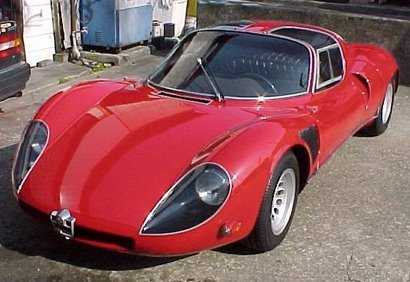
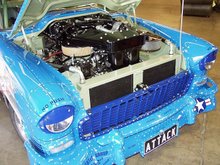
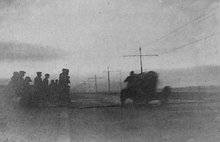



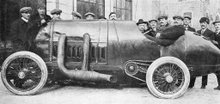


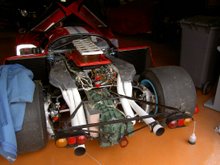

2 comments:
This info is very interesting as I'm trying to experiment with non original cams myself. The problem, compaired to f.e. Alfa Romeo,is the fact that there are almost no aftermarket competition cams available for the Fulvia. I'm trying to get a set of C&B 302 cams for some time now but even they seem to be in short supply.
An interesting novelty for me is your translation of the timing set clearance to the lift at TDC. I had never thought about it when I set my cams to the 1mm, 1.8mm or 2.2mm given clearnce that it was the same as the TDC lift. But you are right when you think about it.
William, thanks for that.
You could contact Cavalitto . I bought a pair of camshafts from them. There is a link on Viva-Lancia.com of course as I expect you know!
Post a Comment